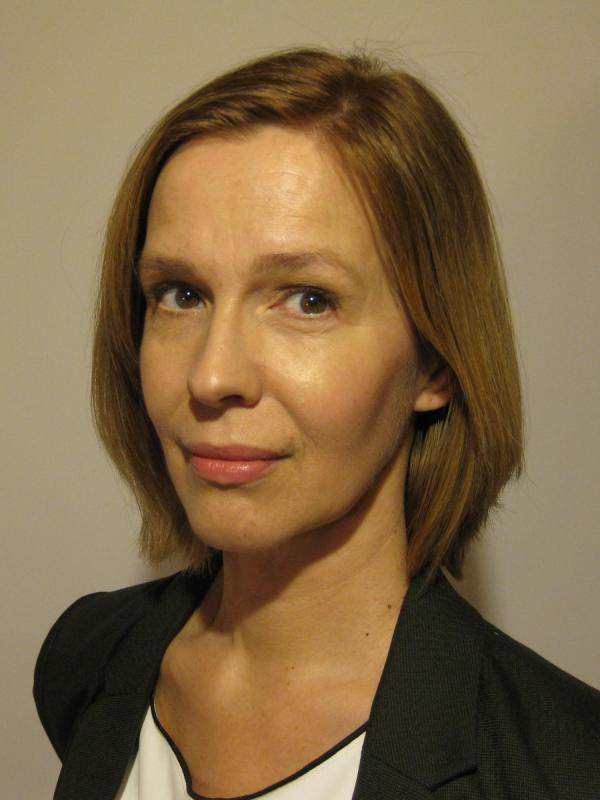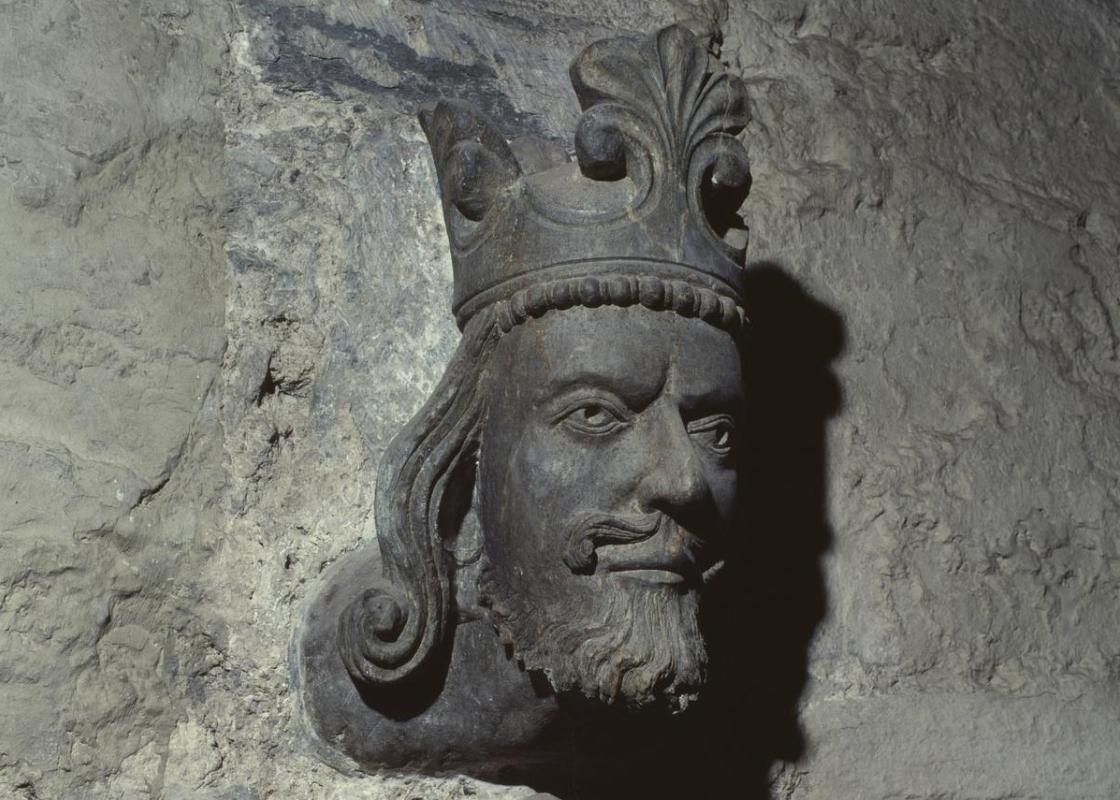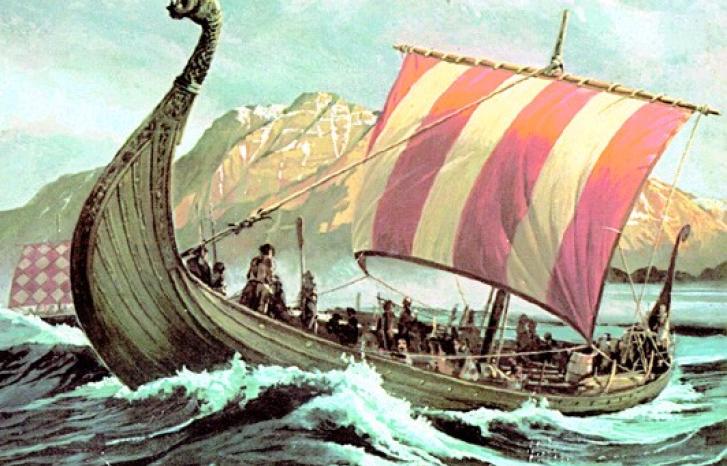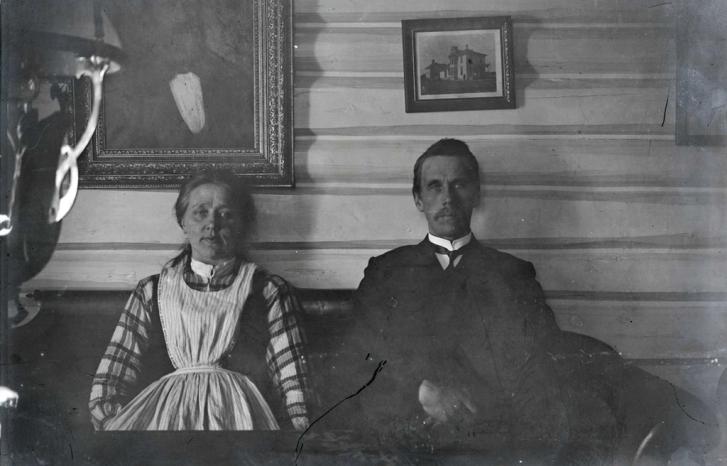“Women did have access to financial resources before that time. But the Code of the Realm confirmed that women had a right to inherit from their parents,” says historian Randi Bjørshol Wærdahl.
“This probably had the greatest impact on those with the most resources. The class perspective is very prominent in everything concerning the Middle Ages.”
When Magnus the Lawmender’s Code of the Realm was adopted in 1274, it was the first time Norway had legislation that applied to the entire country. The anniversary of the law’s adoption was marked at the National Library of Norway in 2024, and they recently held the event “Women’s power in the Middle Ages”. Wærdahl participated in the panel discussion together with historian Miriam Tveit and archaeologist Unn Pedersen.
Former practice
Women who had the prospect of inheriting property, the most important capital in the Middle Ages, now had their right protected by law. Women even had the right to inherit if they had brothers, although a brother would be entitled to twice as much inheritance. Wærdahl explains that this may well have been based on a practice that already existed, but that wasn’t enshrined in law before that time.

“If you didn’t have any brothers in 1100, you would inherit everything, in some parts of the country,” Wærdahl says.
“That gave you a very special status in society. In the Nordic region, many rune stones have been discovered that clearly illustrate that women could come into the possession of a considerable amount of property. Sweden has many such rune stones, and they date all the way back to the Viking Age."
Wærdahl emphasises that the source material from the Viking Age and up to the 13th century mainly comprises saga literature. These sources claim to explain how society functioned in practice, although they were often written several hundred years after the events supposedly took place. This makes it challenging to research this period, so information is also collected from archaeological finds.
The big difference from 1274 and beyond is that we have a larger body of written source material such as legal texts and legal agreements, i.e. what are known as charter material. That makes it easier to get an idea of how women’s role in society changed.
“Just a few decades after the Code of the Realm was adopted, so in the early 14th century, we can already see changes in women’s right to own property and their access to financial resources,” says Wærdahl.
“For example, there was increased emphasis on ensuring that women who were widowed should have a greater opportunity to retain the resources they had shared with their husbands. More focus is placed on married couples and the nuclear family
Marriage as an ideal
Associate Professor Karoline Kjesrud at the Museum of Cultural History believes that the Code of the Realm largely formalised existing trends in society, not least by emphasising the significance of words and the role of books.

“Written culture plays an important role in the Middle Ages,” she says.
“The Code of the Realm helped to standardise some practices, such as trade and fines, by recording them in writing. There was a tendency at the time to legislate different practices. Some changes did occur, but it wasn’t necessarily the Code that brought them about. Maybe they happened independently of the Code.”
A few years before the Code of the Realm, the second Law of Succession was adopted, which clarifies the queen’s role by highlighting the king’s legitimate son as the rightful heir to the throne. This was first specified in 1163, and Kjesrud believes it is an indication of the importance of women’s role in marriage.
“There was a new awareness about women’s role as spouses,“ she says.
“When Magnus the Lawmender married Ingeborg Eriksdatter in 1261, they held a large feast that lasted for three days and was attended by guests from far and wide. After the wedding, Magnus and Ingeborg were crowned king and queen. The coronation of Ingeborg as queen is the first known written description of the coronation of a queen.”
“With the clarification of the inheritance rights of legitimate children, more focus was placed on women’s role in marriage. This can be seen in the chivalric literature, where princesses and queens have active roles on an equal footing with men, but often in other arenas. We can see that they have had an influence in society, including in fashion, language and religion.”
The exceptions where probably many
It is uncertain whether the information the Code of the Realm provides us about everything that happened in society is correct. Randi Bjørshol Wærdahl believes that, among other things, previous research may have underestimated the positions of power women could hold.
“The Code provides an idealised notion of how things should be, but in practice there were many exceptions,” she says.
“Reading the sagas, we see that women could acquire significant land ownership, and we know from all societies that economic resources are in themselves a source of power. Political power is not regulated by law in the same way, and it is clear that there is a connection between wealth and political power."
Although there are some exceptions, military and political power in the Middle Ages belonged to the men. Wærdahl emphasises that the exceptions were again found in the upper economic stratum.
“When women exercised political power, they often did so indirectly by influencing the men in their circle,” she explains.
“There are a few exceptions. For example, women could be their husbands’ proxy, and you could find yourself in a situation where the fortress you lived in was attacked. As the married woman of the house, you had to organise the defence yourself. There are several examples of this happening. The woman was her husband’s natural proxy, since he trusted her.”
Elite culture
Women had to take financial responsibility if their husband was travelling or went to war. In Norway, this applied in particular to fishing and farming households, and also to the organisation of political activities.
“But it’s important to remember that it was very rare for women to have a formal position of power,” says Wærdahl.
“In such cases, the woman would be the widow of a man who had held an important position, and it only ever happened in the most powerful families in Denmark, Norway and Sweden. There’s no doubt that these are an exception to the rule. The regulation of politics and the social and ethical norms of the time tell us that this was an arena that was principally reserved for men.
Wærdahl emphasises that such high-level politics was a matter for the elite:
“Very few men actually participated in politics. Most men had to operate through informal channels to influence the power elite to make decisions in their interest. So it’s about gender, but also about other structures in medieval society.”
Widows with authority
According to the Code, the head of the household should be a man. However, says Wærdahl, we see that a husband and wife were practically partners, each with their own areas of responsibility. In trading towns and cities, women were often deeply involved in trade.
“We also see that the wife could take over her late husband’s position,” says Wærdahl.
“The Code gave widows much more authority, similar to that enjoyed by men. So a status as a widow gave a woman more rights, such as the ability to control her and her children’s financial resources. In principle, you could remarry whoever you wanted, even if your family objected. So being a widow was quite different from being a married woman.”
“But, in practice, we see that particularly younger widows tended to remarry rather quickly,” Wærdahl relates.
“If a woman had significant resources at her disposal, she became something of an object of desire. It was natural to remarry, unless you had a father, uncle or brother who could help,” she says.
“There are examples of women being widowed relatively young and living out their lives alone and managing their own finances without encountering major problems. We know of at least three or four such cases from Norway. However, we have mainly studied the aristocracy and nobility, which is where we have the most source material on individuals.”
Financial restrictions
Another consequence of the Code of the Realm, as well as a special section of the City Law focusing on trade, was that restrictions were placed on the amount of money with which a married woman could trade and purchase. The amount was limited to just a few øre.
“It was a very patriarchal society,” says Wærdahl.
“That is evidenced in the Code and the restrictions it places on married women, but things were not quite the same if you lived in a town or city. We assume it was because the city was more a place for trade and other types of activities than the countryside, which meant you had to be more flexible. Part of the driving force behind urbanisation in the Middle Ages was the notion that ‘urban air makes you free’. You could escape some of the norms found in agricultural society."
Sources also show that the economic restrictions eased as the Middle Ages progressed. Studies of women who bought and traded land in the Middle Ages show that they were far freer to buy and sell a few years down the line, Wærdahl explains.
“The economy evolved and people had to be pragmatic,” she said.
Infidelity reflected on women’s honour
Under the Code of the Realm, it was the woman who was punished if her husband was unfaithful in the Middle Ages. The underlying idea was that women were responsible for preserving their own honour. On the other hand, it was apparently not dishonourable for a man to be unfaithful.
“For example, we know that Bergen was full of prostitutes,” says Wærdahl, “but for a married woman or an under-age woman under her father’s guardianship, this could have major consequences. This clearly reveals the attitudes and norms of society at that time. In the context of marriage, it was important to control women."
But even in this respect, real life did not always live up to the standard of the law. Wærdahl describes medieval society as pragmatic. When issuing fines or handing down judgments, the legal system took account of a person’s situation.
“We must not focus solely on the misogyny in medieval society, although it seems like a natural focal point from a modern perspective.”
“We must assume that most people met, fell in love and married for love. We tend to think that all marriages were arranged, but most people didn’t have significant assets they needed to protect and would have approached life in a more pragmatic manner.”
“Jesus was king while Mary was queen”
We know little about when women began to write, but in the 14th century, queens and duchesses had their own seals, which indicates that they actively engaged in written correspondence. Kjesrud also points out that many of the sources available to us are either religious in nature or come from the elite. They can help shed light on the ideals for women more generally in the Middle Ages.
“There is a risk that we look for faults when we study history, because we are so influenced by our own time,” Kjesrud believes.
She points out that there were two social structures in the Middle Ages. On the one hand, people lived in a secular world on earth, where the king reigned supreme. On the other hand, they lived in a spiritual world, where the bishop was the foremost authority. The spiritual world contained ideals for earthly practices.
“Jesus was king while Mary was queen,” says Kjesrud.
“Society was funded on this notion. Man and woman together were the ideal of power. If women hadn’t played such an active role at that time, such an ideal would not have emerged. The couple complement each other, and the woman was seen as an important adviser, especially in informal conversations and gatherings in the home."
The voices of letters
The Code of the Realm remained in force until well into the 17th century and had a major impact on society. In the past, each region had its own separate laws, but Magnus the Lawmender gathered various input and created nation-wide legislation. However, according to Wærdahl, this was not a rigid system. Changes were made along the way.
From the 15th century, there is a far larger amount of personal correspondence in the source material. Wærdahl emphasises that society would never have functioned if people in the Middle Ages could not read, write and do arithmetic. This also applied to women.
“They had to be able to understand contracts to avoid being mislead,” she says.
“The reason people didn’t previously believe women were able to do this, is that they never investigated. It was just based on assumption. So this type misogyny was not only found during the time in question, but also among those previously working as historians. For generations, researchers have largely been men who focused on political and legal history. They were hardly interested in women.”
The letters give us a better glimpse into people’s way of thinking in the Middle Ages and a greater insight into their everyday lives. They also show that the law did not necessarily govern people’s lives.
“In letters between spouses, we see that they give each other advice and work together to find solutions,” Wærdahl explains.



